You Need to Know THIS About Your Brain
So you can protect it against exhaustion and feel energised instead
No one wants to listen to a boring lecture on human neurophysiology … so I’m going to try my best to make this post interesting and more importantly, meaningful enough for you to consider important action.
The human brain is the most sensitive and sophisticated piece of tissue we’ve ever encountered. We know a lot about it, yet much remains a mystery.
One thing we do know is that it’s the most energy hungry organ that we own. In other words, it’s our most metabolically active organ, and one of the reasons for this is that it never rests. Even when we’re asleep, it’s busy cleaning itself and tweaking what we learned during the day and our memory.
Another reason is that it’s our primary survival organ. It needs to be awake and ‘on’ because anything in our environment could be a danger and threaten our survival - even when we’re asleep our brain moves through different stages of sleep to stay partly vigilant.
Our brain is also an interconnected organ with a variety of areas and networks working together, many of which are often active simultaneously.
We seldom think about thinking – we simply assume it’s going to occur unhindered for our foreseeable future.
That we’ll continue to learn new skills and relate to others with ease.
Continue to solve challenges and deal with obstacles.
Figure things out.
However, we seldom think about what’s powering all this activity and that’s a critically important aspect of cognition - which underpins our mental heath and long-term cognitive health too.
Before we get into the details around what powers brain function, let’s examine some brain basics.
Important Brain Facts You Need to Know
➡️ At only 2% of our body weight our brain uses upwards of 20% of the carbohydrates we consume, in the form of glucose (but can use other sources, which we’ll discuss later).
As our most metabolically active organ it needs this relatively large amount of energy to be able to function optimally.
➡️ We have 160,000 km of blood vessels in our body, with about 650 km of them in our brain, and they ferry oxygen and blood (which transports nutrients) to each of our 83+ billion neurons.
➡️ B vitamins are co-enzymes, required inside mitochondria for the conversion of carbohydrates (glucose) into adenosine triphosphate (ATP), the energy currency of all cells, including our greedy neurons. [To give you an idea of how important energy synthesis is in the brain we can have up to two million mitochondria in each neuron. (Misgeld T & Schwarz TL, 2017.)]
➡️ Other nutrients such as Vitamin C, D and E are also involved in energy production, as are magnesium, manganese, selenium, zinc and essential fatty acids (EFAs).
➡️ In the process of producing energy from glucose and oxygen, mitochondria also produce free-radicals, which have the potential to cause damage to brain tissue. Anti-oxidant nutrients, (such as vitamin C and E), counter free-radical damage, and prevent the inflammatory cascade that causes significant structural damage.
➡️ When we’re deficient in these nutrients we’ll feel physically tired, but our brain feels any deficiency first, because it’s our primary survival organ.
➡️ Over time, these deficiencies cause mitochondrial and neuronal damage, which extends outwards to other neural tissue, which contributes to energy deficits and therefore cognitive decline.
➡️ The brain has nowhere to store energy, so a consistent, stable supply of energy is critical, which means nutrients need to be available consistently too.
➡️ The brain is focused on allostasis, so keeps track of our bodies energy budget because it never knows when it may be necessary to move quickly to get away from danger.
What’s the Brains Source of Energy?
The brain has three options to use for energy:
Glucose is a type of sugar that our bodies use for energy - it’s a single-sugar molecule, or a mono-saccharide.
The brains preferred food or fuel comes from carbohydrates (and starch) which get converted into glucose, which is then converted into ATP by our mitochondria. Although carbohydrates (and starch) provide energy, eaten in excess they lead to weight gain, because excess carbohydrates are converted into fat. That’s why the low-fat diet craze failed abysmally!
Gluconeogenesis is a process which occurs in the liver and produces carbohydrates from specific amino acids (proteins) when we don't eat enough carbohydrates.
This mechanism ensures brain function and stable blood glucose will continue during extreme conditions, like fasting or starvation, or extreme exercising, as well as when people are on low-carbohydrate diets.
Ketones can be used as a source of fuel for the body and brain and are produced in the liver from fats, when we are deprived of carbohydrates, and hence glucose.
Medium Chain Triglycerides (MCTs) produce more ketones per unit of energy than normal dietary fats and have become extremely popular dietary supplements.
MCTs are converted in the liver to ketones and can be used by the brain as a source of energy too. However, specific MCT molecular structures are better for brain energy use versus others.
There is evidence to suggest that ketones can be useful in brains that have become unable to use glucose as a source of fuel, which can be related to Type 2 Diabetes and/or age related cognitive decline.
Are Some Parts of the Brain ‘Greedier’ Than Others?
The prefrontal cortex (PFC) is also known as the CEO of the brain, and its functions are often called ‘higher order’ or ‘executive’ functions.
The PFC is the most sophisticated part of our brain and although it makes up less than 10% of our whole brain volume it uses 25% of the 20%+ energy the brain requires for functioning. (Bruckmaier, M, et al, 2020.)
Thoughtlessly, we daily take for granted all the following, which occur with the PFCs support, as a result of information we gather via external and internal input:
· Abstract thinking
· Consequential thinking
· Creativity
· Data analysis
· Decision-making
· Executing plans
· Goal setting
· Inhibiting behavior/thoughts
· Innovating
· Organising data and information
· Pattern detecting
· Prioritising
· Problem solving
· Reasoning
The PFC does many of these activities simultaneously, such as analysing data, while looking for patterns, while anticipating potential consequences and outcomes of imagined actions, while assessing information in relation to past experiences via memories in the form of experience, knowledge, and skills.
It can quickly sort through vast quantities of new data, access and compare relevant memories with this data, and adjust ideas accordingly.
In addition, the PFC helps us to both encode (store in memory) and decode (retrieve) information concurrently and quickly.
The PFC also generates and sustains goals for top-down control, while it filters out irrelevant operations and enhances processing of relevant stimuli.
But, when our PFC is busy for an extended period, we feel mentally tired, also known as ‘cognitive fatigability.’
‘ … prolonged continuous performance of cognitively demanding tasks, like for example doing complicated mental arithmetic compared to simply recognizing the individual digits constituting the arithmetic problem, induces cognitive fatigue and is associated with a time-related deterioration of performance, the degree of which is referred to cognitive fatigability …’ (Kurzban R, et al, 2013.)
And, when the brain is tired it also makes neural connections less effectively.
‘ … long-range connectivity is altered when fatigue effects emerge …’ (Kurzban R, et al, 2013.)
You don’t need a vivid imagination (which unsurprisingly also uses your PFC) to realise that this will stifle creativity.
Something else to consider, from Wiehler A et al (2022):
‘ … Taken together with previous fMRI data, these results support a neuro-metabolic model in which glutamate accumulation triggers a regulation mechanism that makes lPFC activation more costly, explaining why cognitive control is harder to mobilize after a strenuous workday …’
What does this mean?
The researchers suggest that the accumulation of glutamate is linked to PFC fatigue at the end of a day where one has spent a lot of time using its sophisticated skills.
Decision-Fatigue Rears Its Head Again …
Researchers that examined decision-fatigue many years ago explained the dip in decision-making capability at the end of the day - that most people are familiar with -as a dip in ‘willpower.’
Other researchers used ‘ego-depletion’ similarly.
Although these words weren’t the best descriptors for what was happening to decision-making as the day ended, they did however point to the brain as being less able to make good decisions. We now understand more about why this was happening: it’s due to the PFC running out of energy, with one of the symptoms being a decrease in inhibitory activity. (Danziger S et al, 2011.)
For example, it is easier to override good sense and eat the packet of chocolate brownies in the evening vs. in the morning.
What About Mood Regulation?
Our fully functioning PFC also provides goal directed regulation of our actions, emotions and thoughts, which enable us to temper emotions and to express thoughts and feelings accordingly.
This helps us control and inhibit their expression when required, because the thoughtless expression of behaviors and emotions hampers healthy relationships in both society, work and personal settings. For example, when our PFC is functioning well we won’t put our feet up on an interviewers desk or shout at someone when we don’t like their opinion.
The PFC is also the part of the brain that allows us to ‘time-travel,’ because it has the special ability to generate and sustain mental images in the absence of sensory stimulation.
This is why we can sit in a pitch dark room and hurtle backwards or forwards in time, in 3D colour, without moving a muscle, yet have emotional reactions to what we’ve imagined.
Our brain is therefore a time-machine and abstract thought is another of its seemingly magical tricks.
What about ‘juggling’ thoughts - isn’t that also expensive from a neural energy perspective?
Isn’t our working memory involved with this?
Our Working Memory Also Needs Attention - Excuse the Pun!
The PFC also works with our working memory, which can hold between five and seven items - including ‘chunking’ items into groups - at one time.
This capacity facilitates cognitive flexibility which allows us to move between ideas and concepts with ease.
Our PFC acts like a filter to everything we’re exposed to. Today we’re exposed to so much information, a lot of which finds space in our working memory, until it’s replaced by something else.
The PFC may battle to filter out that which isn’t important, because it didn’t evolve to deal with a never-ending stream of information.
Neural energy is used to direct our attention to what we’ve decided to focus on, and if we’re trying to pay attention to too much at once we are unable to accomplish what we started, because we’ve become distracted.
Each time we’re distracted - pay attention to something else - our neural energy is used to redirect our attention.
Dragging it back again and again costs neural energy, for example:
Consider how many tabs you have open right now?
How many emails you’ve got open, that you need to respond to?
How many emails you scan even though you’re not going to respond to them?
How many other tasks are awaiting your time?
Every time you consider any of these, plus a myriad other tasks and responsibilities, your attention shifts towards that item, and neurons need energy to do this.
If you’re constantly cognitively ‘juggling’ between items all day, your working memory (and PFC) is using a lot of neural energy.
It’s no wonder people feel exhausted at the end of the day by all this attention-switching, also called ‘switch-cost.’
To see what this modern tendency does to our productivity please see my previous article here:
So, every time we shift our attention, our PFC has to work to re-establish focus and inhibit attention to whatever we were doing previously, all of which uses neural energy.
And the more often we shift our attention the greater the chance that we’ll run out of neural energy.
⬇️ Remember how frustrated you feel when you can’t recall the thing you were thinking about a second ago?
⬇️ The moment you walked into a room and forgot why you went there?
⬇️ The name of the person you can’t recall although their face is clear in your mind?
⬇️ The name of the book/movie/documentary you want to share with someone?
Lethologica is the technical term used to describe the inability to remember ‘the right word.’ You know that you know the word – it’s in your memory, but you just can’t recall it.
Lethonomia is the inability ‘to recall the right name,’ such as when you can’t recall the name of the movie you watched last night, or a previous colleague you haven’t seen for years.
All these are instances of a neural glitch, something going wrong, are based on energy not being where it’s required.
Wow, that’s a lot of sophistication - that must be expensive from a neural energy perspective?
More Important Neurobiology …
The brain competes with the body for energy resources due to the critical role it plays in survival.
Research using PET and MRI assessments suggest that basal metabolism, in the absence of connectivity, accounts for about 30% of brain glucose utilization. This means ‘the average energy required for vital functions of neurons such as maintenance of resting potentials and action potentials.’ (Tomasi X et al, 2013.)
The researchers therefore suggest that spontaneous energy usage, which is a reflection of increased connectivity, comprises 70% of energy usage. This includes the energy cost of synaptic transmission. (Tomasi X et al, 2013.)
‘ … In particular, aerobic glycolysis is significantly elevated in medial and lateral parietal and prefrontal cortices. In contrast, the cerebellum and medial temporal lobes have levels of aerobic glycolysis significantly below the brain mean…’ (Vaishnavi SN, et al, 2010.)
Why is so much MORE energy required for spontaneous energy usage?
Remember the well-known phrase, ‘neurons that fire together, wire together?' When neurons are wired together they use less energy to execute an action because they are already connected.
Neurons that aren’t already connected need more energy to connect the first time. And in the PFC, which is constantly analysing new information, new connections are required to make sense of it.
Higher order/executive functions which occur in the PFC therefore have a greater need for energy because there are no established neural pathways.
In other words, there’s no ‘automaticity!’
Now I can hear you saying, ‘well then, I just need to replenish the energy - bring on a sugary treat!’
Not so fast, because there are other factors that impact our neural energy besides what we eat - and sugary treats aren’t the answer because they also release adrenaline when then spike our blood glucose, which negativity impacts attention, focus, memory and mood.
What Else Interferes With the Brains Optimal Use of Energy?
Sleep deprivation, nutrient deficiencies, including a lack of EFAs, chronic stress and lack of movement, all impact the brains ability to both generate and use energy optimally.
I’ll address each of these topics in other posts.
What to do?
We live in a complex world where information overwhelm leads to increased decision-fatigue, choice fatigue, and information fatigue, along with more ‘switch cost,’ which combined demand more neural energy than our brains have available.
Please see my previous article for more details about the effects of such.
Tony Robbins is famous for saying that ‘where attention goes, energy flows,’ and although he’s no neuroscientist, he is right!
Pay attention to what you’re paying attention to.
If you don’t, your attention will be sucked into things that aren’t serving you.
And you won’t have the neural or physical energy to do what’s important because you’ll have spent too much on other PFC activities and ‘switch costs!’
Some people believe that our PFC is only able to work effectively for between 2 - 4 hours per day although there is no robust evidence to support this idea. However, evidence in relation to anxiety, depression and burnout levels suggests this may very well be the case, especially because the PFC did not evolve to cope with the amount and type of information it’s faced with today, and becomes unable to modulate mood, which is one of its functions.
Regardless, you know very well when you can’t think deeply, focus well and analyse information optimally anymore.
‘ … breaking up prolonged sitting with frequent, short physical activity breaks may reduce right prefrontal cortex activation, with improvements in some aspects of working memory, mood, and alertness …’ (Heiland, EG, 2021.)
Get up from your desk and go for a short walk and do some simple stretches to shift your attention and give your PFC a break from its sophisticated tasks.
Examine your diet carefully. Does it contain the right amount of both the macro- and micro-nutrients to make energy efficiently, and have you considered your age in relation to neural energy requirements and source bioavailability? [Again, I’ll get to these details in future posts.]
When your blood glucose is consistently stable your brain has its energy requirements met and you’ll have more reliable whole brain (including PFC) function.
In conclusion, we’ve all seen or even know people whose brains stop working well - who forget where and who they are.
Other people develop specific mental health challenges, such as anxiety and depression, which directly impact their ability to enjoy life, and make them more susceptible to other cognitive and physical challenges.
Regardless, when we notice these situations, we may think about our brain, but generally only fleetingly.
And we don’t consider neural energy in relation to how brains may be battling.
This is a mistake because the health of our brain is pivotal to our mental and physical well being, our capacity to think clearly, make good decisions, be creative, solve challenges, and adapt to change.
All of which determine the quality of our lives.
References [Please note this is not an exhaustive list, neither did I list every reference for each fact in the post above because there’s so much information that I‘ve summarised.]
Ames BN. (2006) Low micronutrient intake may accelerate the degenerative diseases of aging through allocation of scarce micronutrients by triage. Proceedings of the National Academy of Sciences of the United States of America; 103(47):17589-94.
Blaze T, et al. (2019) Quantitative positron emission tomography reveals regional differences in aerobic glycolysis within the human brain. J Cereb Blood Flow Metab;39(10):2096-2102
Bohnen JLB, et al. (2023) Ketogenic interventions in mild cognitive impairment, Alzheimer's disease, and Parkinson's disease: A systematic review and critical appraisal. Front Neurol; 14:1123290.
Bolla AM, et al. (2019) Low-Carb and Ketogenic Diets in Type 1 and Type 2 Diabetes. Nutrients. 11(5), p. 962.
Bruckmaier M, et al. (2020) Attention and Capacity Limits in Perception: A Cellular Metabolism Account. Journal of Neuroscience; 40:35;6801-6811.
Christie ST, Schrater P. (2015) Cognitive cost as dynamic allocation of energetic resources. Front Neurosci;9:289.
Cunnane S. (2022). Brain energy rescue with ketones improves cognitive outcomes in MCI. Alzheimer's & Dementia, 18, e059627.
Danziger S, et al. (2011) Extraneous factors in judicial decisions. Proceedings of the National Academy of Sciences;108(17):6889-92.
Funahashi S (2017) Prefrontal Contribution to Decision-Making under Free-Choice Conditions. Front. Neurosci. 11:431. doi: 10.3389/fnins.2017.00431
Gold PE. (2005) Glucose and age-related changes in memory. Neurobiol Aging; 26 Supple 1:60-4.
Guo Z, et al. (2013) Brain areas activated by uncertain reward-based decision-making in healthy volunteers. Neural Regen Res;8(35):3344-52. doi: 10.3969/j.issn.1673-5374.2013.35.009.
Hathaway WR, Newton BW. Neuroanatomy, Prefrontal Cortex. [Updated 2023 May 29]. In: StatPearls [Internet]. Treasure Island (FL): StatPearls Publishing; 2024 Jan-.
Heiland EG, et al. (2021) Frequent, Short Physical Activity Breaks Reduce Prefrontal Cortex Activation but Preserve Working Memory in Middle-Aged Adults: ABBaH Study. Front Hum Neurosci; 15:719509.
Hitze B, et al. (2010) How the selfish brain organizes its supply and demand. Front Neuroenergetics; 2:7.
Laughlin SB, Sejnowski TJ. (2003) Communication in neuronal networks. Science; 301(5641):1870-4.
Li L, et al. (2012) Neural mechanisms underlying the cost of task switching: an ERP study. PLoS One; 7(7):e42233.
Kennedy DO. (2016) B Vitamins and the Brain: Mechanisms, Dose and Efficacy - A Review. Nutrients. 8:2, 1-29.
Kurzban R, et al. (2013) An opportunity cost model of subjective effort and task performance. Behav. Brain Sci. 36, 661–679 (2013).
Lennie P. (2003) The cost of cortical computation. Current Biology; 13(6):493-7.
Marx W, et al. (2017) Nutritional psychiatry: the present state of the evidence. Proc Nutr Soc; 76(4):427-36.
McCabe D. (2016) Feed Your Brain. 7 Steps to a Lighter, Brighter You! Sydney, Australia: Exisle Publishing.
Mergenthaler P, et al. (2013) Sugar for the brain: the role of glucose in physiological and pathological brain function. Trends Neurosci; 36(10):587-97.
Miller EK & Cohen, JD. (2001). An integrative theory of prefrontal cortex function. Annual Review of Neuroscience, 24, 167-202.
Misgeld T, Schwarz TL. (2017) Mitostasis in Neurons: Maintaining Mitochondria in an Extended Cellular Architecture. Neuron; 96(3):651-666.
Neal EG, et al. (2008) The ketogenic diet for the treatment of childhood epilepsy: a randomised controlled trial. Lancet Neurol; 7(6):500–506.
Parletta N, et al. (2013) Nutritional modulation of cognitive function and mental health. J Nutr Biochem; 24(5):725-43.
Peters A, et al. (2011) The selfish brain: stress and eating behavior. Frontiers in Neuroscience. [Internet].
Petruo VA, et al. (2018) On the role of the prefrontal cortex in fatigue effects on cognitive flexibility - a system neurophysiological approach; Sci Rep 8, 6395.
Poff AM, et al. (2021) Ketone Supplementation: Meeting the Needs of the Brain in an Energy Crisis. Front Nutr; 8:783659.
Schurr A. (2002). Neuronal Energy Requirements. In: Walz, W. (eds) The Neuronal Environment. Contemporary Neuroscience. Humana Press, Totowa, NJ.
Tomasi D, et al. (2013) Energetic cost of brain functional connectivity. Proceedings of the National Academy of Sciences, USA; 110(33):13642-7.
Vaishnavi SN, et al. (2010) Regional aerobic glycolysis in the human brain. Proc Natl Acad Sci U S A; 107(41):17757-62.
Wiehler A, et al. (2022) A neuro-metabolic account of why daylong cognitive work alters the control of economic decisions, Current Biology, 32(16), 3564-75, e5.

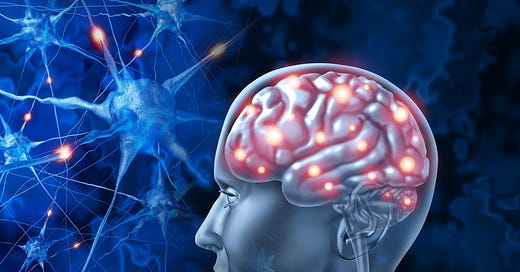




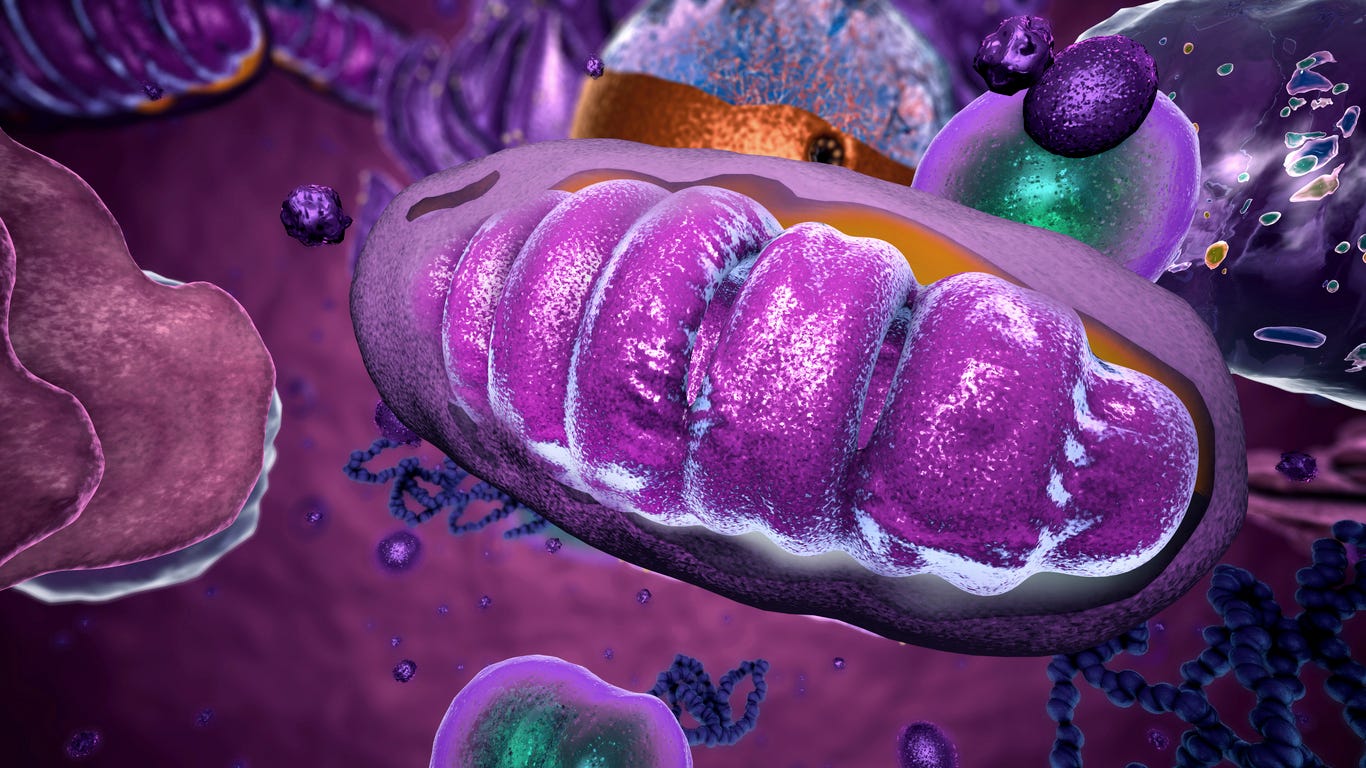

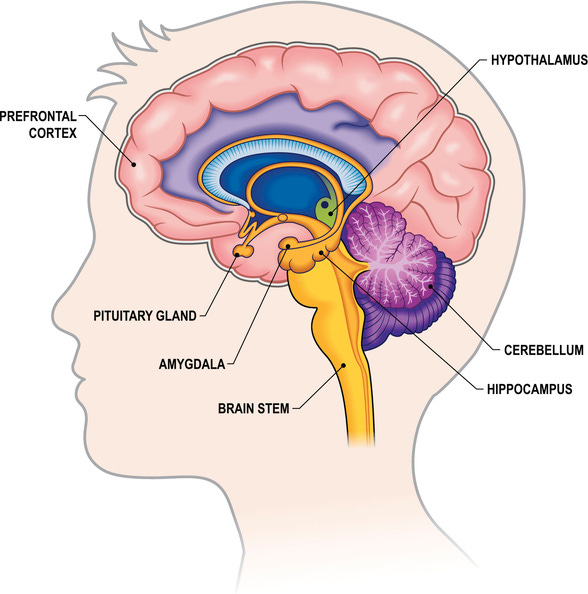


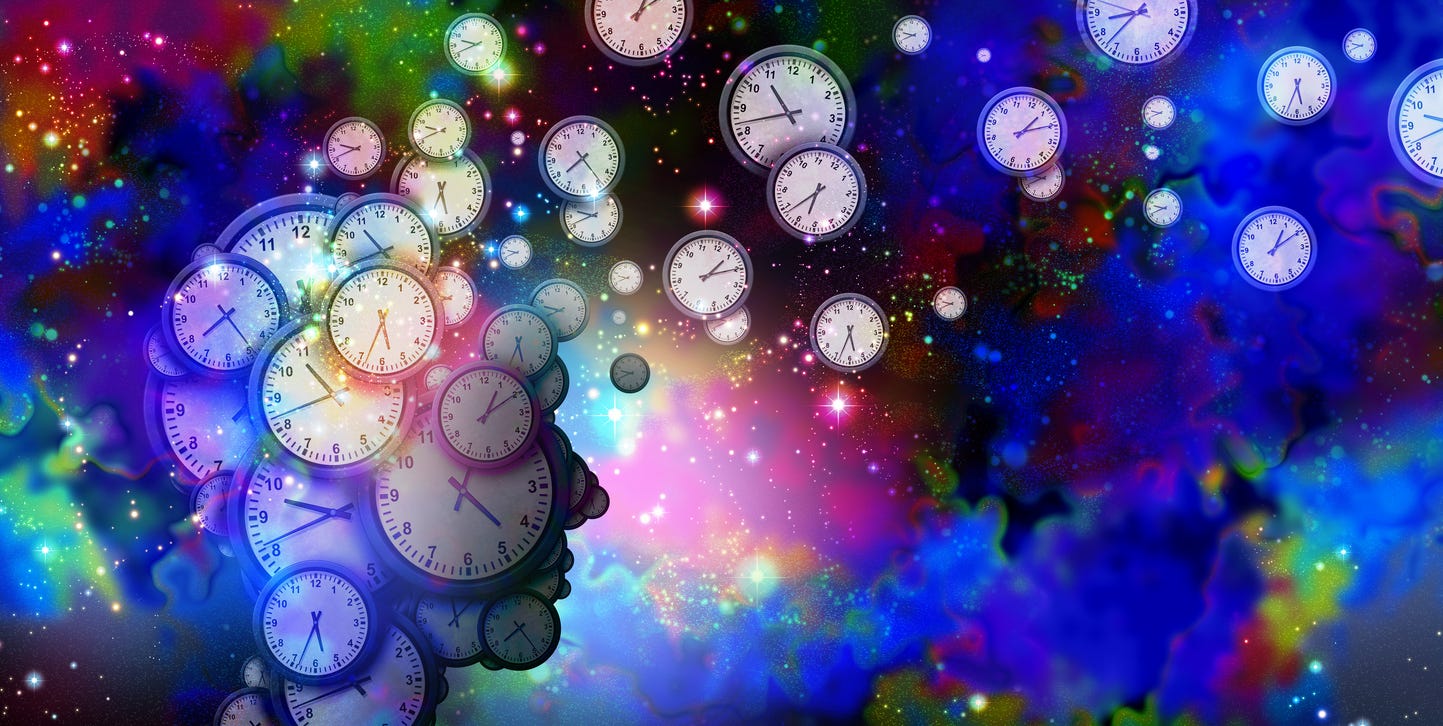
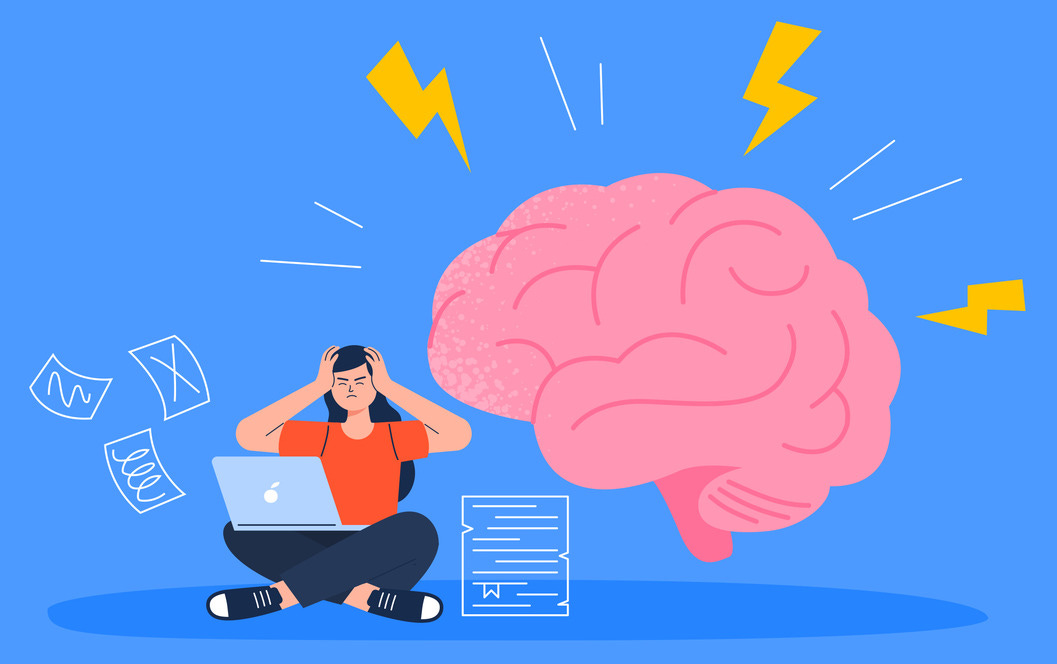


An ahh-ha moment. Makes complete sense why we are seeing a few brains malfunctioning in the modern world. They are running on 2 cylinders through mindless information gathering, which leads to inefficient energy production. This opens up the question on what is genuine ADD and what is not really ADD? Does this use of energy have a relationship with Dopamine levels as well, or seperate function altogether?
"Why is so much MORE energy required for spontaneous energy usage?
Remember the well-known phrase, ‘neurons that fire together, wire together?' When neurons are wired together they use less energy to execute an action because they are already connected.
Neurons that aren’t already connected need more energy to connect the first time. And in the PFC, which is constantly analysing new information, new connections are required to make sense of it."